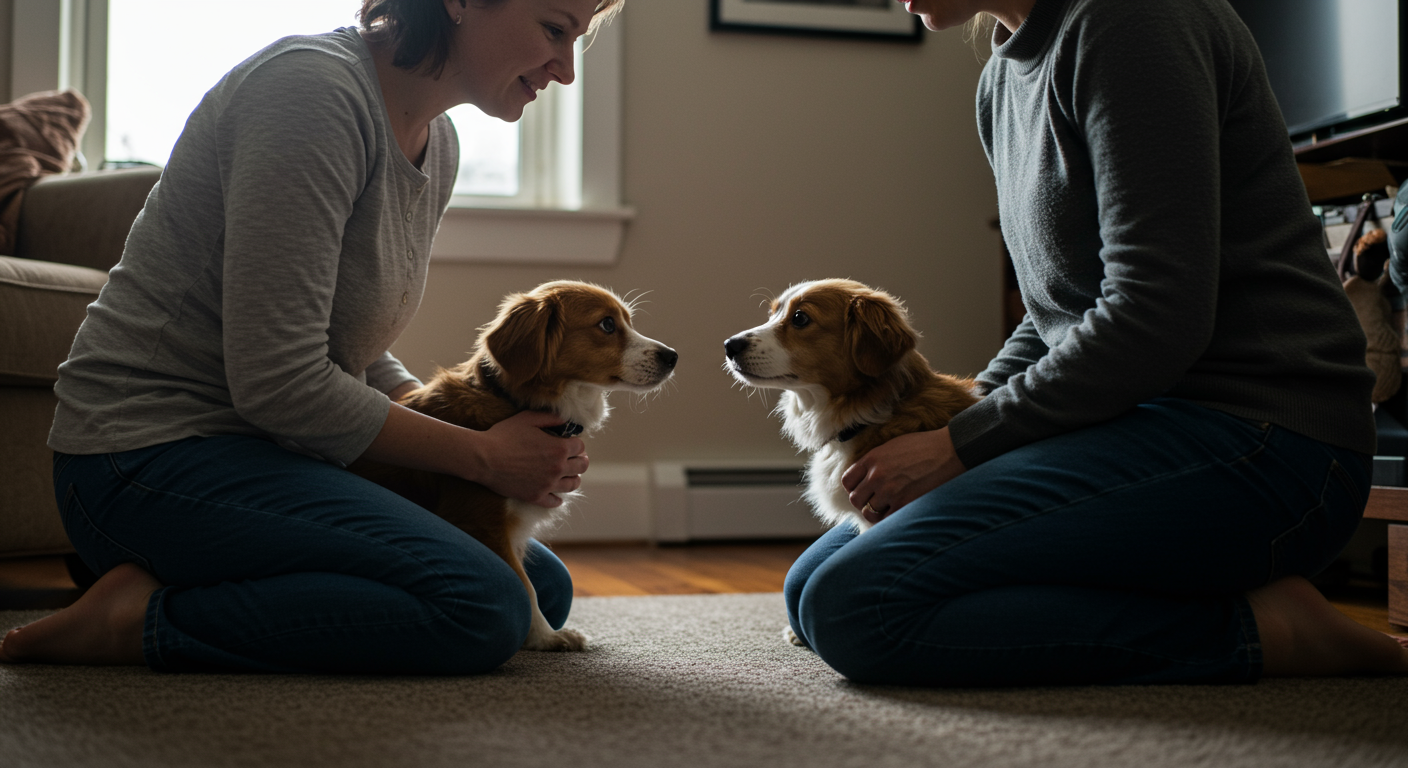As experienced pet parents, you understand that your dogs communicate in many ways. While barks and growls are often easy to interpret, the meaning behind a whine can be more complex. This guide delves into the nuances of canine vocalizations, specifically focusing on dog whining. We'll explore the various reasons behind this behavior and provide actionable strategies to address it, fostering a more harmonious relationship with your furry friend.

Deep Dive into Dog Whining for Experienced Pet Parents
Dog whining, while sometimes irritating, is a form of communication. It’s crucial to understand the underlying cause to effectively address it. Whining can stem from a variety of factors, including anxiety, boredom, pain, or a simple desire for attention. As seasoned dog owners, you are well-equipped to observe and analyze your dog's behavior, but this guide will provide insights that may help you fine-tune your approach to dog whining.
Advanced Strategies and Insights
Identifying the Cause
The first step in addressing dog whining is pinpointing its cause. Consider these scenarios:
- Anxiety: Does your dog whine when left alone, during thunderstorms, or around unfamiliar people or places? This could indicate separation anxiety or general anxiety.
- Boredom: Is your dog whining because they lack sufficient mental and physical stimulation? This is common in dogs that aren’t getting enough exercise or interactive play.
- Attention-Seeking: Does your dog whine when you're busy, hoping for a treat, a walk, or a game?
- Pain or Discomfort: Whining can be a sign of pain. If the behavior is new or accompanied by other symptoms, consult your vet.
Recognizing Anxiety-Related Whining
Anxiety is a frequent culprit. Look for these signs:
- Pacing or restlessness
- Destructive behavior when alone
- Excessive panting or drooling
- Trembling or shaking
- Changes in appetite or elimination habits
Boredom as a Factor
Dogs need mental and physical enrichment. Here's how to tell if boredom is the problem:
- Whining when toys are out of reach
- Whining when you're not actively engaging with them
- Chewing or digging excessively
- Restlessness or inability to settle
Optimizing Your Pet's Behavior
Training and Behavior Modification
Positive Reinforcement
Use positive reinforcement to reward desired behaviors. For example, if your dog whines for attention, ignore the whining. When they become quiet, immediately reward them with praise or a treat. A PetSafe Training Clicker can be a helpful tool for clearly marking the desired behavior for immediate reward.
Desensitization and Counter-Conditioning
If anxiety is the issue, gradually expose your dog to the trigger (e.g., being left alone). Pair the trigger with positive experiences, such as treats or toys. This helps change their emotional response. This process is called desensitization and counter-conditioning.
Environmental Adjustments
Creating a Safe Space
Provide a safe and comfortable space for your dog, such as a crate or a designated bed. Make the space inviting with comfortable bedding and familiar toys. A crate can provide a sense of security for anxious dogs.
Enrichment and Stimulation
Ensure your dog receives enough exercise and mental stimulation. Provide interactive toys, puzzle feeders, and regular walks. A Kong Toy filled with treats can keep your dog occupied and reduce whining from boredom.
Case Study: Achieving Reduced Whining with a Senior Dog
Let's consider a case study. Max, a 12-year-old Golden Retriever, started whining excessively after his owner, Sarah, went back to work. Sarah suspected separation anxiety. She implemented a combination of strategies:
- Consulting with her Veterinarian: To rule out any underlying medical issues.
- Increased Exercise and Play: Sarah started taking Max for longer walks and playing fetch in the backyard. This helped tire him out and reduce anxiety.
- Training: Sarah worked on a "stay" command and rewarded calm behavior when she was preparing to leave the house.
- Safe Space: She ensured Max had a comfortable bed and access to his favorite toys while she was away.
- Calming Aids: With her vet’s approval, Sarah began using calming chews before she left for work.
As a result, Max's whining decreased significantly within two weeks. Sarah's patience and proactive approach improved Max's quality of life, strengthening their bond.
Navigating Complex Pet Challenges
When to Seek Professional Help
If your dog's whining persists or worsens, it's time to consult a professional. Options include:
- Veterinarian: To rule out any medical causes, such as pain or illness.
- Certified Professional Dog Trainer (CPDT-KA): For help with basic obedience and behavior modification.
- Veterinary Behaviorist: For severe cases of anxiety or other behavioral issues.
Integrating Advanced Care Practices
Medication Considerations
In some cases, medication may be necessary to manage anxiety or other conditions. Your veterinarian can prescribe appropriate medications and monitor your dog's response.
Holistic Approaches
Consider incorporating holistic methods, such as:
- Aromatherapy: Diffusing dog-safe essential oils, such as lavender, can help reduce anxiety.
- Acupuncture: This can be helpful for pain management and stress reduction.
Long-Term Wellness & Longevity Tips
Regular Veterinary Checkups
Schedule regular checkups with your veterinarian to identify and address any potential health problems early on. This is especially important for senior dogs.
Dental Care
Maintain good dental hygiene to prevent pain and discomfort, which can lead to whining. Brush your dog's teeth regularly and consider dental chews.
Nutrition
Feed your dog a high-quality diet appropriate for their age, breed, and activity level. A well-balanced diet supports overall health and reduces the likelihood of health-related whining. Consult with your vet on diet recommendations.
Expert-Level Pet Care Insights
Observing Body Language
Learn to recognize your dog's body language cues. A tucked tail, flattened ears, or a whale eye (showing the whites of the eyes) can indicate anxiety or discomfort. Pay close attention to these signals.
Enrichment Activities
Continually introduce new and challenging activities to keep your dog mentally stimulated. This can include agility training, scent work, or puzzle toys. The more engaged your dog is, the less likely they are to whine out of boredom.